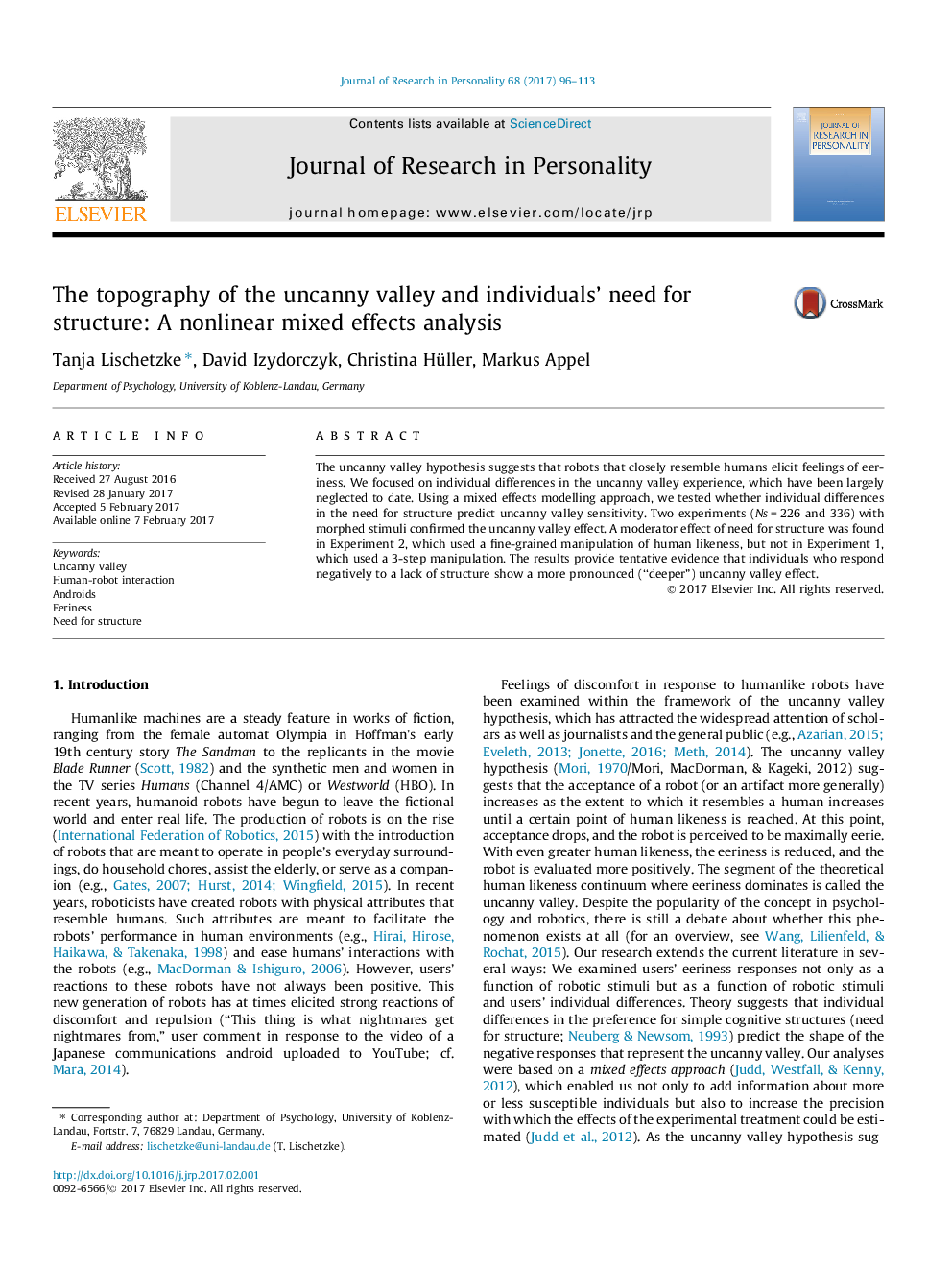| Article ID | Journal | Published Year | Pages | File Type |
|---|---|---|---|---|
| 5046181 | Journal of Research in Personality | 2017 | 18 Pages |
â¢Uncanny valley (UV) hypothesis: Robots that closely resemble humans elicit eeriness.â¢Individual differences in the UV experience were examined.â¢Mixed effects models were used to test for a moderator effect of Need for Structure.â¢Two experiments with morphed stimuli confirmed the UV effect.â¢In Experiment 2, Response to Lack of Structure was related to UV sensitivity.
The uncanny valley hypothesis suggests that robots that closely resemble humans elicit feelings of eeriness. We focused on individual differences in the uncanny valley experience, which have been largely neglected to date. Using a mixed effects modelling approach, we tested whether individual differences in the need for structure predict uncanny valley sensitivity. Two experiments (Ns = 226 and 336) with morphed stimuli confirmed the uncanny valley effect. A moderator effect of need for structure was found in Experiment 2, which used a fine-grained manipulation of human likeness, but not in Experiment 1, which used a 3-step manipulation. The results provide tentative evidence that individuals who respond negatively to a lack of structure show a more pronounced (“deeper”) uncanny valley effect.
